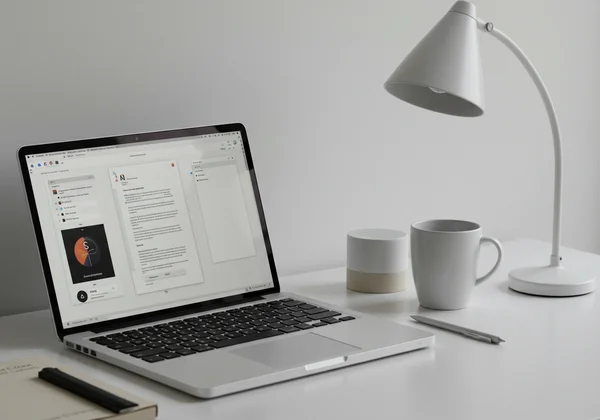Reading Speed Test Strategies: Conquering Academic Papers & Complex Reports
Feeling overwhelmed by dense research papers or business reports? Whether you're a student buried under a mountain of research articles or a professional drowning in dense business reports, this guide is your lifeline. We'll explore proven strategies for speed reading academic papers and other challenging texts, helping you boost productivity without sacrificing comprehension. But first, have you ever wondered, How can I improve my reading speed and comprehension? Before you dive into these techniques, it's crucial to know your starting point. You can take a free reading speed test to measure your current baseline and set a benchmark for your progress.

Strategic Approaches for Reading Complex Texts
Before you can increase your reading pace, you must adopt a strategic mindset. Simply moving your eyes faster across the page is a recipe for poor retention. Real efficiency means reading with a clear purpose and focusing on understanding. These foundational methods prepare you to tackle any dense document effectively.
Pre-Reading: Setting the Stage for Better Comprehension
Never start reading a complex document from the first word to the last without a plan. Pre-reading, or surveying the text, is like looking at a map before a journey. It gives you the lay of the land, helping you navigate the content much more efficiently. This crucial first step takes only a few minutes but can save you hours of confusion.

Start by examining the structure. For an academic paper, read the abstract, introduction, and conclusion first. These sections contain the core argument, main findings, and summary. For a business report, focus on the executive summary, table of contents, and any key charts or graphs. This initial survey helps you grasp the main ideas and decide which sections require a closer look, allowing you to allocate your time and mental energy wisely.
Active Reading: Engaging with the Material for Deeper Understanding
Passive reading is when your eyes scan the words, but your mind is elsewhere. Active reading is the complete opposite; it is a focused engagement with the text. To read complex material effectively, you must become an active participant, constantly questioning, connecting, and evaluating the information presented. This focus is your key to combining speed with comprehension.
Transform your reading into a conversation with the author. Ask questions as you go: What is the main point of this paragraph? What evidence supports this claim? Do I agree with this conclusion? Use a pen or digital highlighter to mark key phrases, and jot down brief notes or questions in the margins. This physical interaction keeps you focused and helps cement the information in your memory, making it easier to recall later. This is a key step to improve reading efficiency and ensure what you read actually sticks.
Key Techniques for Research Paper Reading
Academic papers are famously dense, filled with jargon, and follow a strict structure. Applying targeted techniques can demystify them, turning a daunting task into a manageable one. These methods are designed to help you extract the most critical information in the least amount of time, a vital skill for any ambitious student.
Skimming & Scanning for Core Arguments and Data
Skimming and scanning are not the same as careless reading; they are high-level skills for rapidly locating information. Skimming involves quickly running your eyes over the text to get a general overview of the content and structure. Use it to understand the author's main argument without getting bogged down in the details. Focus on headings, subheadings, and the first and last sentences of paragraphs.
Scanning is used when you are looking for a specific piece of information, such as a name, date, or keyword. Your eyes dart across the page in search of that particular detail, ignoring everything else. When reading a research paper, you can scan the methodology section for study parameters or the results section for specific data points. Mastering both techniques allows you to dissect papers surgically. After practicing, why not take a free reading speed test to see how much faster you've become?

Overcoming Jargon: Strategies for Technical Vocabulary
One of the biggest hurdles in reading complex texts is specialized terminology. When you constantly stop to look up unfamiliar words, your reading flow is broken, and your pace plummets. Instead of letting jargon defeat you, create a system to manage it. The goal is to maintain momentum while still ensuring you understand the material.
As you pre-read, circle or list any unfamiliar technical terms. Try to infer their meaning from the surrounding context first. If the meaning isn't clear, create a quick glossary for the paper you are reading. Write down the term and a simple definition. This not only helps you with the current paper but also builds your vocabulary for future reading in the field. This proactive approach turns a roadblock into a learning opportunity.
Boosting Efficiency in Report Reading
For professionals, time is money. For professionals, quickly digesting reports, extracting key insights, and making informed decisions gives you a competitive edge. The following strategies are tailored for the corporate world, focusing on practical outcomes and efficient report reading.
Identifying Key Sections & Executive Summaries
Business and technical reports are almost always structured for busy readers. The most important information is intentionally placed at the beginning in an executive summary. This section is your best friend. It provides a high-level overview of the report's purpose, key findings, and recommendations. Always read this section first and read it carefully.
For the rest of the report, use the table of contents to guide your focus. You likely don't need to read every word of a 100-page report. Identify the sections most relevant to your role and responsibilities. Are you interested in the financial implications? Jump to the budget section. Need to understand the project timeline? Go straight to the implementation plan. This targeted approach respects your limited time. Once you feel confident, check your WPM to quantify your improvement.
Minimizing Distractions for Focused Digital Reading
Does reading on a screen slow you down? For many, the answer is yes. Digital environments are filled with distractions, from email notifications to the temptation of social media. To read efficiently on a screen, you must create a focused workspace. Close all unnecessary tabs and applications. Turn off notifications on your computer and phone.

Consider using a "reading mode" extension in your browser, which strips away ads and sidebars, leaving only the text. Adjust the font size and background color to reduce eye strain. Reading on a screen requires more deliberate focus, so actively work to create a distraction-free bubble. This discipline is your secret weapon for maintaining speed and comprehension in the digital age.
Master Complex Texts: Test Your Improved Reading Speed Today
You don't need to be a genius to conquer dense academic papers and complex reports; you just need the right strategies. By adopting pre-reading habits, engaging actively with the text, and applying targeted techniques like skimming and scanning, you can transform your reading process. You can save hours, reduce stress, and make better-informed decisions.
Now that you have the tools, it's time to put them into practice. The only way to know if these methods are working is to measure your progress. Apply these strategies to your next reading assignment and then test your reading speed to see how your speed and comprehension have improved. Test your speed today and unlock your full reading potential!
Frequently Asked Questions About Reading Complex Texts
How can I improve my reading speed and comprehension effectively?
The most effective way is to treat speed and comprehension as partners, not competitors. Start by using the strategies in this guide, such as pre-reading to understand context and active reading to engage with the material. Critically, you must measure your performance. Use a tool like our WPM test to get a baseline score for both your words-per-minute (WPM) and your comprehension. Regularly testing yourself after practicing new techniques will show you what works and motivate you to keep improving.
What is subvocalization and how can I stop it when reading academic papers?
Subvocalization is the habit of silently saying each word in your head as you read. It's a common practice that limits your reading speed to your talking speed. To reduce it, try using a pointer, like your finger or a pen, to guide your eyes across the page at a slightly faster pace than you can "speak" the words. You can also try humming softly or chewing gum, as this occupies the muscles used for speech. Reducing subvocalization is a key step to breaking past the average reading speed.
What is considered a good reading speed for academic or professional materials?
This is a tricky question because it heavily depends on the material's complexity and your purpose for reading. For general fiction, an average reading speed is 200-300 WPM. However, for dense academic texts or technical reports, a "good" speed might be lower, perhaps 150-250 WPM, because the priority is deep comprehension. The goal isn't to hit a magic number but to find the optimal pace where you can read efficiently while still retaining and understanding the information. The best way to find your ideal pace is to try our free tool and see how your comprehension score changes at different speeds.